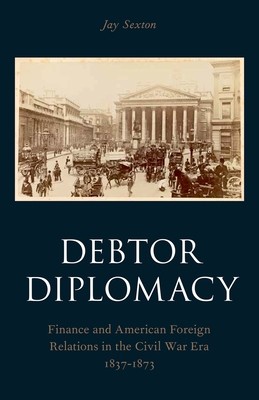
- We will send in 10–14 business days.
- Author: Jay Sexton
- Publisher: Clarendon Press
- ISBN-10: 0190212586
- ISBN-13: 9780190212582
- Format: 15 x 21.6 x 2 cm, minkšti viršeliai
- Language: English
- SAVE -10% with code: EXTRA
Reviews
Description
The United States was a debtor nation in the mid-nineteenth century, with half of its national debt held overseas. Lacking the resources to develop the nation and to fund the wars necessary to expand and then preserve it, the United States looked across the Atlantic for investment capital. The need to obtain foreign capital greatly influenced American foreign policy, principally relations with Britain. The intersection of finance and diplomacy was particularly evident during the Civil War when both the North and South integrated attempts to procure loans from European banks into their larger international strategies. Furthermore, the financial needs of the United States (and the Confederacy) imparted significant political power to an elite group of London-based financiers who became intimately involved in American foreign relations during this period. This study explores and assesses how the United State's need for capital influenced its foreign relations in the tumultuous years
wedged between the two great financial crises of the nineteenth century, 1837 to 1873.
EXTRA 10 % discount with code: EXTRA
The promotion ends in 23d.14:32:48
The discount code is valid when purchasing from 10 €. Discounts do not stack.
- Author: Jay Sexton
- Publisher: Clarendon Press
- ISBN-10: 0190212586
- ISBN-13: 9780190212582
- Format: 15 x 21.6 x 2 cm, minkšti viršeliai
- Language: English English
The United States was a debtor nation in the mid-nineteenth century, with half of its national debt held overseas. Lacking the resources to develop the nation and to fund the wars necessary to expand and then preserve it, the United States looked across the Atlantic for investment capital. The need to obtain foreign capital greatly influenced American foreign policy, principally relations with Britain. The intersection of finance and diplomacy was particularly evident during the Civil War when both the North and South integrated attempts to procure loans from European banks into their larger international strategies. Furthermore, the financial needs of the United States (and the Confederacy) imparted significant political power to an elite group of London-based financiers who became intimately involved in American foreign relations during this period. This study explores and assesses how the United State's need for capital influenced its foreign relations in the tumultuous years
wedged between the two great financial crises of the nineteenth century, 1837 to 1873.


Reviews